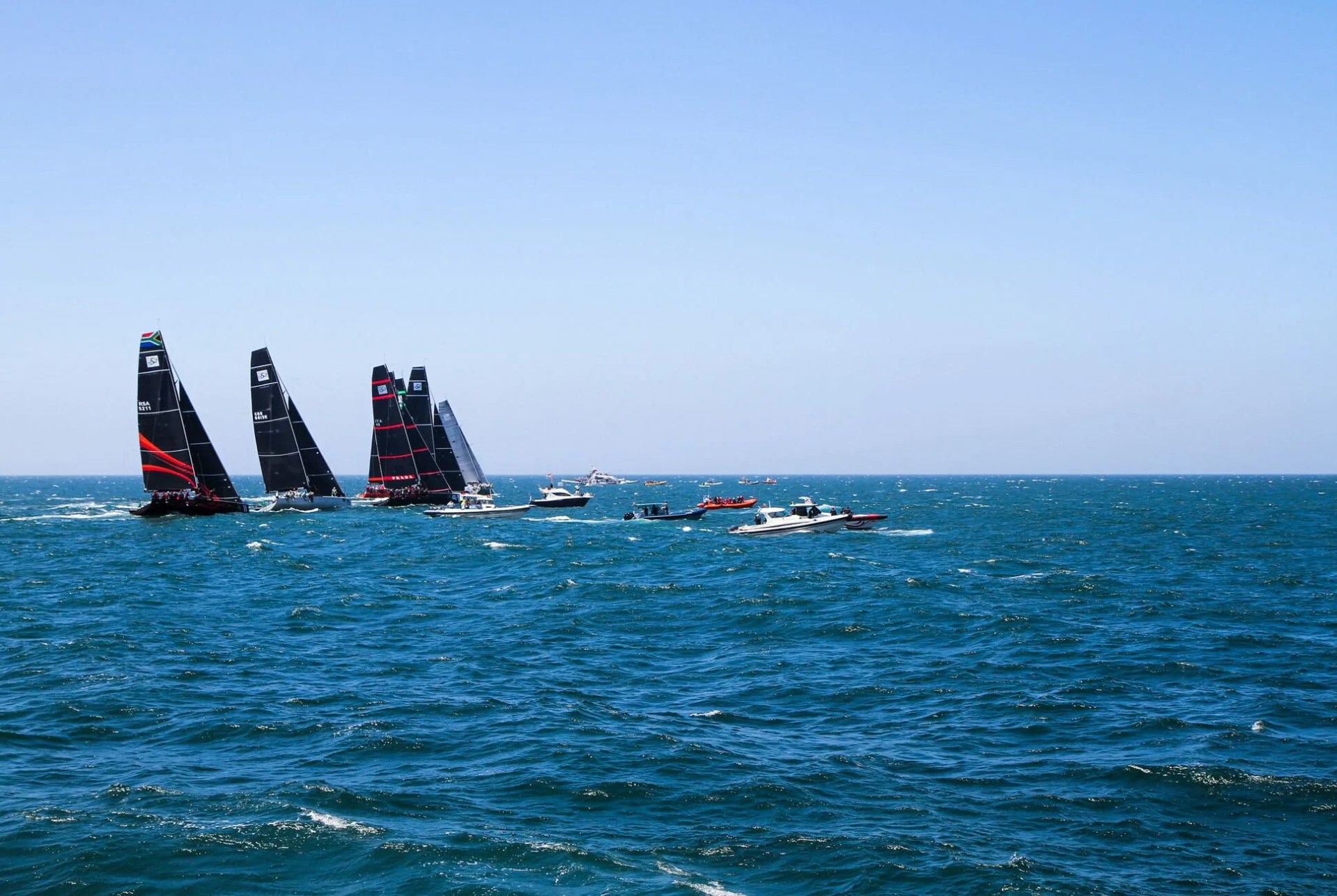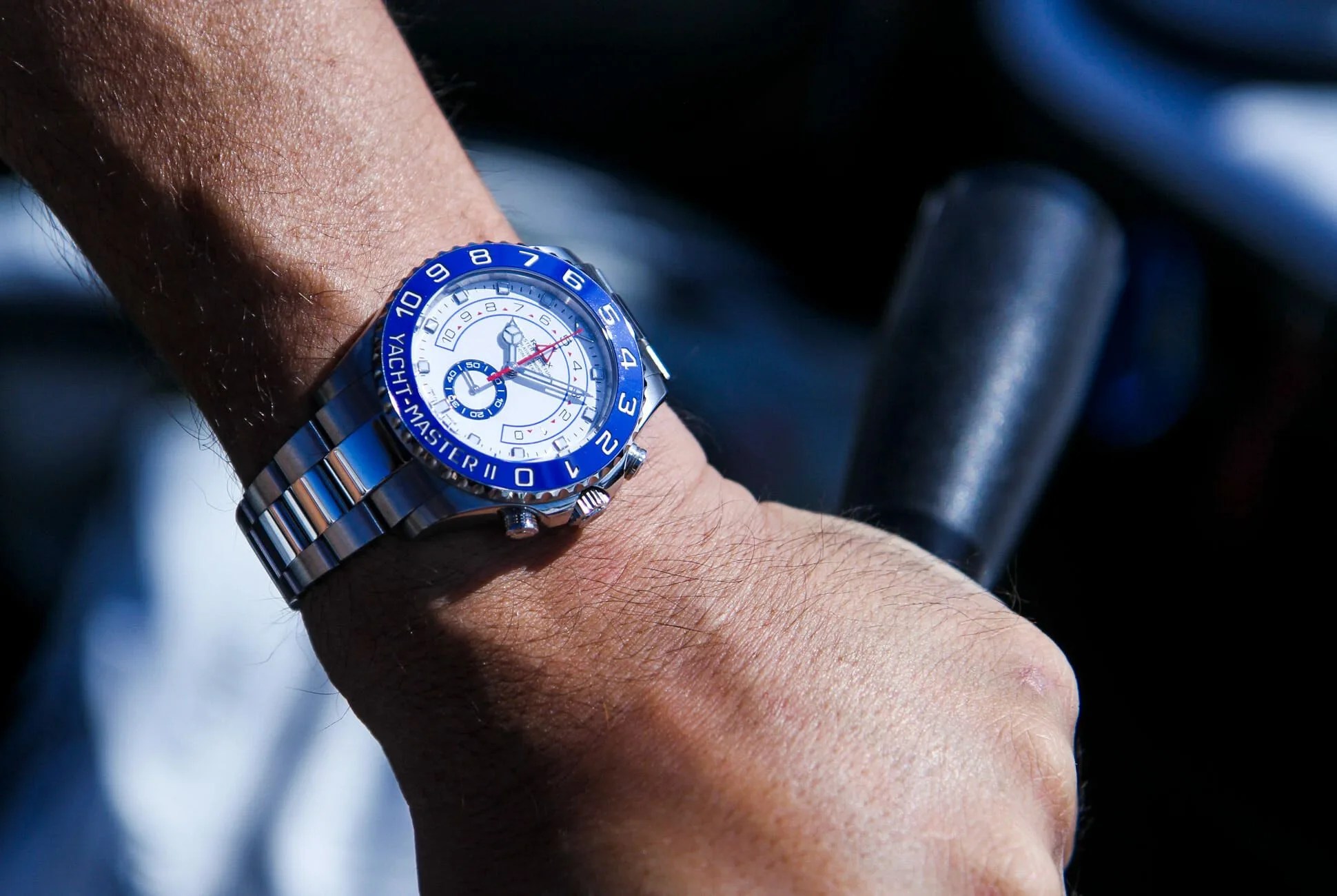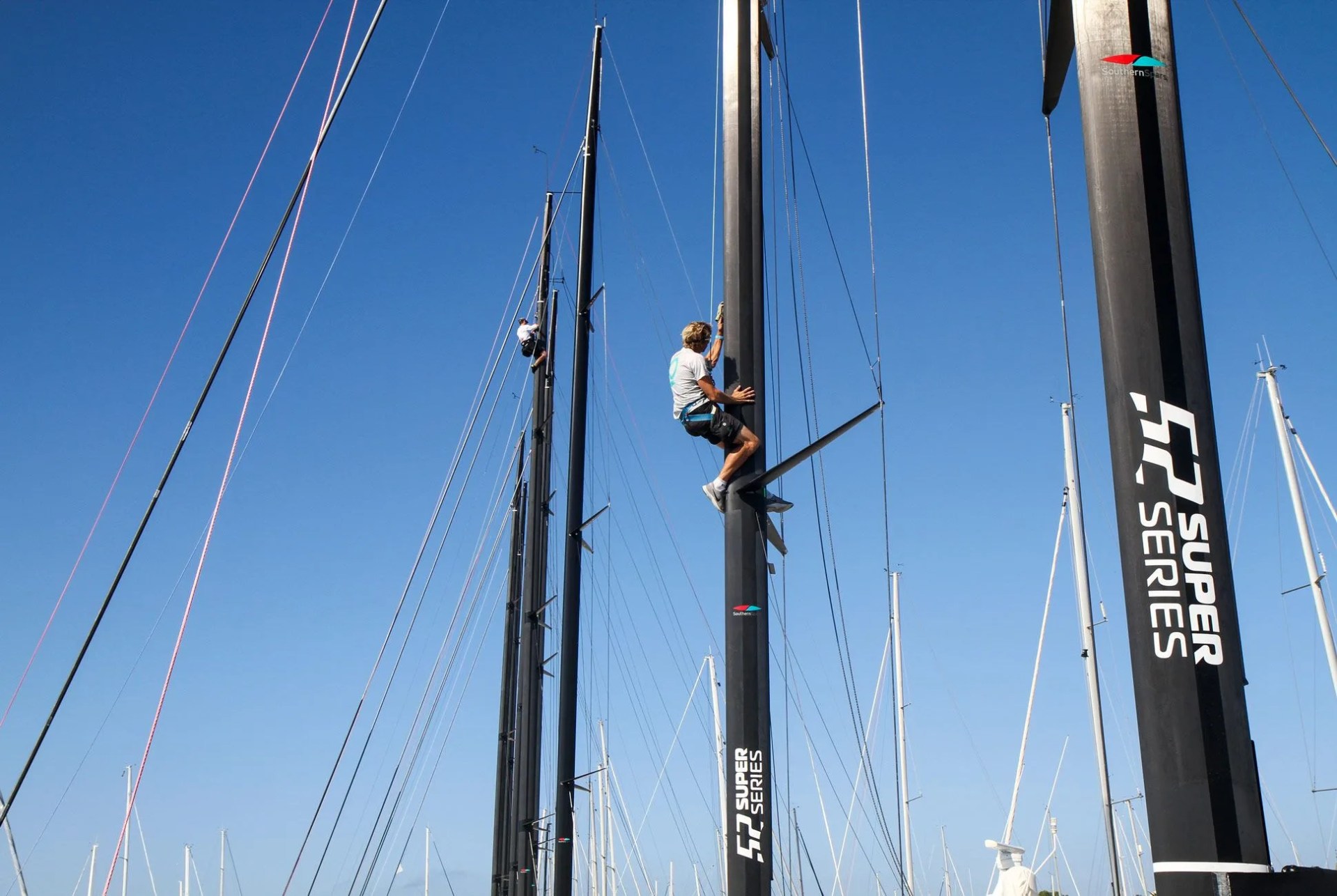If you’re part of the rarified strata of people who can afford a Yacht-Master II, surely one could understand if you kept it on land during its lifespan, placed carefully in a safe like wearable art, with its striking blue bezel making an appearance on only the grandest of occasions. However, to really see the chronograph in it’s finest moments, living out it’s born purpose, you should race a sailboat with it.
I learned this firsthand at the Rolex TP52 World Championship in Cascais, Portugal this July, where dozens of the world’s best sailors, including numerous Olympians and America’s Cup winners, competed against each other on nine nearly identical 52-foot carbon fiber racing yachts (Rolex has been involved in the yachting world for over 60 years). Because the boats in this class are so similar, and the sailors so accomplished, the entire race is often decided by tiny adjustments and critical moments–the most notable of which is the starting sequence. In fact, a race really begins five minutes before the opening flag, with boats performing a delicate ballet for prime starting position, weaving and circling within feet of one another. The goal is to cross the starting line at maximum speed the moment the countdown hits zero, but not a second early.

Here’s how it works: two boats, helmed by race officials, position themselves across a small span of ocean and drop anchors to mark themselves as the starting line. Once they are anchored in place, a voice arises through a crackling two-way radio, “5, 4, 3, 2, 1,” it says, counting down to a group of eager sailors ready to synchronize their clocks to the official race timing. Then, a horn sounds, a flag is raised, and the voice declares, “5 minutes.”
At this moment, the boats begin showing their strategy for the first time. Some are already far removed from the starting line, moving forward at a measured speed and finding their pace. Others, like the American-owned boat and eventual winner Quantum, broadcast a more unique strategy, crossing the starting line exactly at the 5-minute warning, before soon circling back and aggressively butting into a line of their competitors moments before the official start.
During the countdown, the navigator of a boat is interpreting a variety of factors, like true wind angle, current, boat speed, and GPS location to deliver updates to his team about its ideal path to the starting line, and he’s doing all this while watching the clock. “10 seconds early,” he may chime in – or, ideally, he will say nothing at all.
“The start of the race is where the cards are dealt,” five-time Olympic medalist and helmsman of the Onda, Robert Scheidt told me. “And a quiet boat is a fast boat.”

